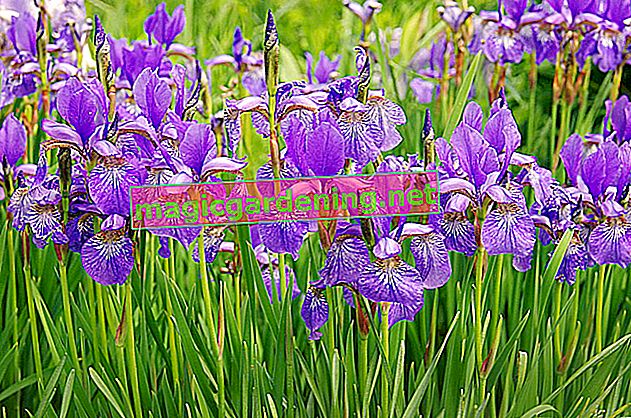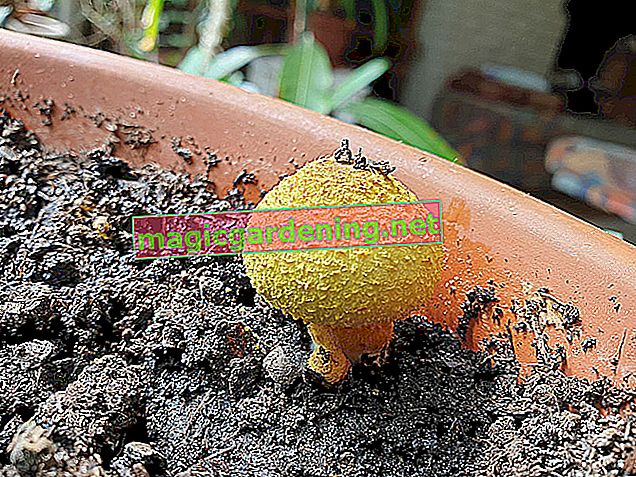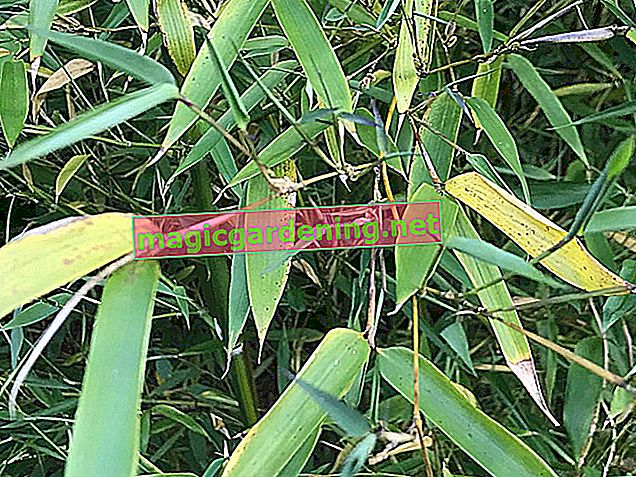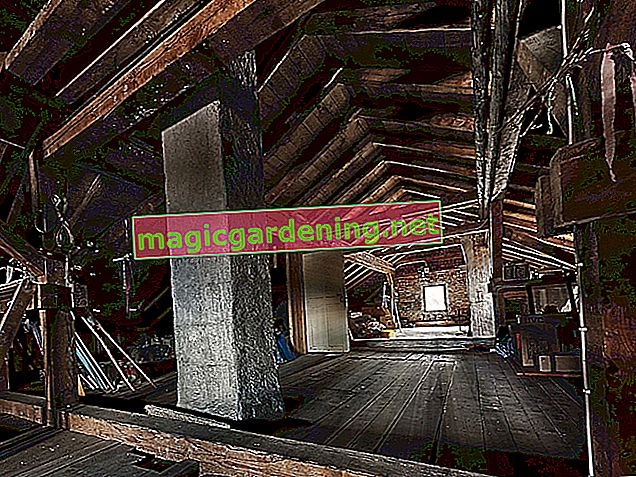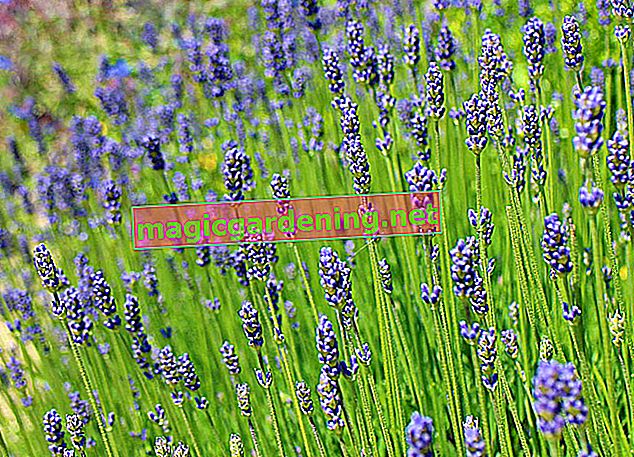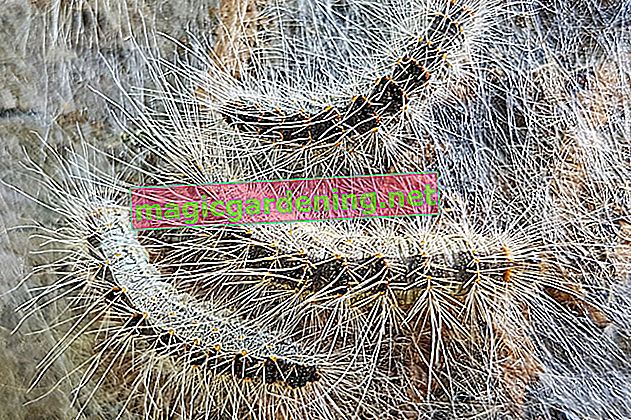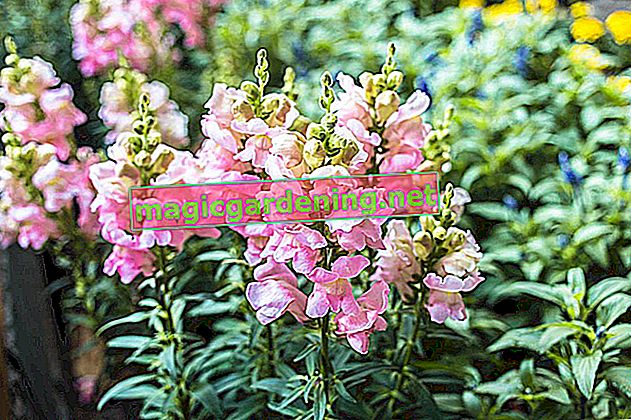
Plant levebunks correctly
From mid-May, you can plant levk beds that you have drawn up yourself or bought ready-made in the bed in a sunny, sheltered location. Since the summer flower is particularly effective in small groups, create small planting holes at a distance of 20-30 cm. Mix in a little compost, horn shavings (€ 6.39 on Amazon *) and rock flour (€ 14.95 on Amazon *) in the excavation. Meanwhile, immerse the potted root ball in water until no more air bubbles rise. Then plant the potted flowers down to the lower pair of leaves and water them.
Continue reading
also read
- Planting bunk beds: get down to business!
- What care do levbunks need?
- Plant and care for mint in the pot perfectly - this is how it works
Care tips
Immigrated from the mild climate of the Mediterranean Sea, Levkojen are not equipped with the robust constitution of native flowers. So pay attention to the following care program so that the delicate summer flower thrives splendidly:
- After planting, ventilate the soil regularly with the rake to protect against black-leggedness
- If soil or substrate dry out, watering is done moderately with normally calcareous water
- Fertilize the bed every 4 weeks with compost, horn shavings and rock flour or algae lime
- Apply liquid fertilizer to the pot every 2-3 weeks and add a little rock flour
- Cleaning out withered flowers creates space for new buds
Primarily, a well-balanced water balance determines the well-being and woe of Levkojen. Therefore, check the moisture content of the soil with your finger every 1-2 days. When the top 2 cm is dry, pour the water directly onto the root disc.
Continue reading
Which location is suitable?
The summer flower festival of Levkojen takes place in a sun-drenched, warm and sheltered location with fresh, moist and humus soil. Good drainage is essential to prevent waterlogging after a summer downpour. Last but not least, the soil should have a medium to high lime content
What soil does the plant need?
In terms of soil quality, the cultivation of Levkojen proves to be uncomplicated. The pretty summer flowers thrive in normal garden soil that is fresh and moist, humic and loosely structured. The only special request is a light to medium lime content. You can do this by adding algae lime, rock flour or garden lime (€ 9.46 at Amazon *) in connection with preparing the ground for planting.
When is the flowering time?
The flowering period of Levkojen extends from May to October. In order for the summer flower to hold out over this long period of time, cut out wilted flower stems regularly. This way you will make room for fresh buds. So that the blossoms of tall varieties do not end up in the dust, support them with a stick from the middle of the flowering period.
Cut levebunks correctly
Consistently cut off withered flower stems of a levkoje. This effort is rewarded with a well-groomed appearance, fresh buds and a long flowering period. Ideally, give the flowers time to sow independently before winter. Then you get the plant residues out of the ground and dispose of them on the compost.
Pouring levebunks
Regular watering is the top gardener duty as part of the Levkojen maintenance. Since the flowers prefer a calcareous substrate, you can use normal tap water without hesitation. Put the water directly onto the root disc with the jug nozzle and do not let it rain down on the sensitive beauties from the garden hose.
Fertilize Levkojen properly
If you put compost, horn shavings and rock flour into the ground during planting, the energy requirements for the start of the season are covered. Once again, we recommend adding organic fertilizers just before flowering begins, followed by monthly refreshments until the end of flowering.
Diseases
Young Levbunks are often victims of black leggedness. This fungal infection is targeting seedlings that are just about to begin a blooming summer. Experience has shown that consistent ventilation of the earth and moderate watering with chamomile tea keeps the cunning fungal spores at a distance.
Overwinter
The wintering topic is unnecessary for annual Levkojen varieties. Biennial hybrids first develop a rosette of leaves in the year of planting, from which the magnificent inflorescence rises in the following year. As a precaution, we recommend using brushwood to protect these foliage from permanent wetness and freezing frost during the winter. Cultivated in a pot, put the Mediterranean scented miracles in the frost-free winter quarters.
Increase levebunks
As annual flowers, Levkojen are easy to multiply by sowing. Growing behind glass from February onwards is promising, whereas direct sowing from April is fraught with various imponderables. In addition, an early flower starts the season with a vital growth lead in order to present its flowers particularly early. How to sow correctly:
- Fill a seed tray with lean substrate and moisten it slightly
- Sow the seeds so that they can be pressed with a board as a light sprout
- Put it in the greenhouse or put a plastic bag on it
- At 16-18 degrees Celsius, germination begins within 14 days
If the seedlings have produced 2 pairs of leaves, they are separated at a distance of 5 × 5 cm. Keep the substrate slightly moist until mid-May and preferably pour chamomile tea to prevent the dreaded black-leggedness. The young Levkojen are planted out at a distance of 20-30 cm.
Levbunks in the pot
In the pot, Levkojen transform the summer balcony into a scented garden. As a substrate, we recommend high-quality compost-based potting soil, enriched with rock flour and lava granules or sand. If you insert a few pottery shards between the substrate and the opening in the ground as drainage, waterlogging has no chance. Check the substrate every 1-2 days with a thumb test in order to water if the surface is dry. The nutrient reserves in pre-fertilized soil last until shortly before the start of flowering. Then fertilize every 14-21 days with a liquid fertilizer for flowering plants. Also, trim off wilted flower stems regularly to make room for fresh buds.
Nice varieties
- Cinderella Appleblossom: fairytale flower panicles with 4-5 cm large, double single flowers and compact growth; 25 cm
- Mammoth Lavender-Lilac: The sturdy stems are covered with large, lavender-colored flowers; 60-90 cm
- Pillow Talk: White-pink, biennial variety that sets itself in scene with a seductive scent in the rock garden; 45 cm
- Summer Night Levkoje: The variety spoils us with a scent symphony of vanilla, clove, cinnamon, nutmeg and cocoa; 20 cm
- Ten Week Brilliant Rose: Enchanting summer flower in bright rose red and a wonderful fragrance; 35 cm


